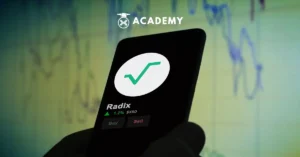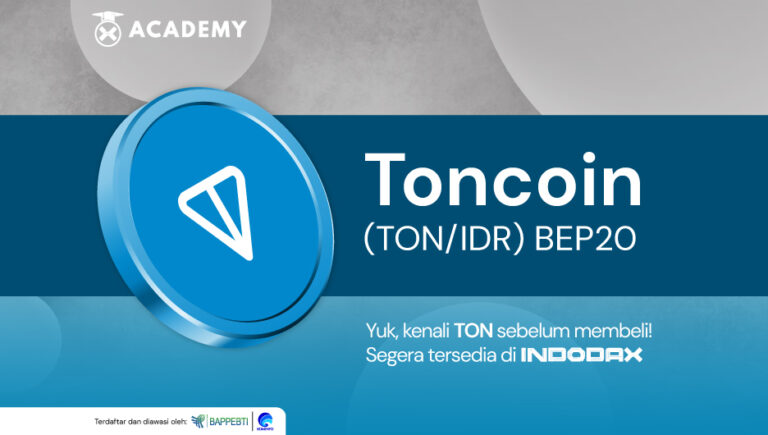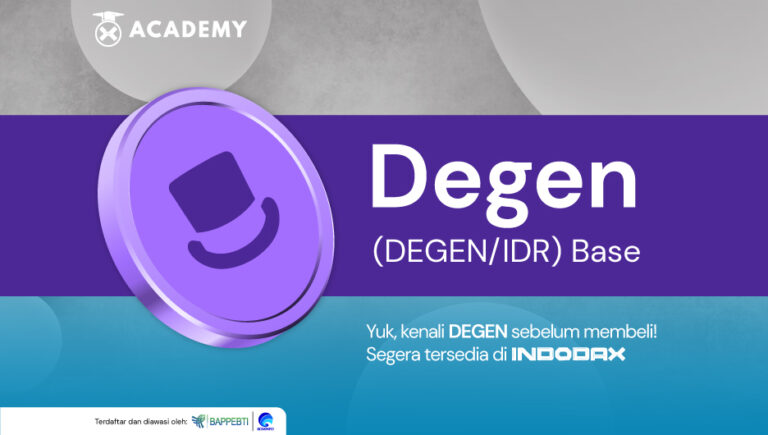Amidst the rapid development of blockchain technology comes a platform that offers innovative solutions to address the challenges faced by today’s digital finance ecosystem.
The platform is known as Radix, and it has quickly attracted attention from crypto players and decentralized application (DApps) developers. To understand what Radix is, from its definition to its components, check out the following review!
What is Radix?
Quoting academy.moralis.io, Radix DLT (distributed ledger technology) is a full-stack-based layer-1 protocol that makes it easy for developers to build and extend decentralized finance (DeFi) applications without the risk of network congestion, smart contract hacking, and exploitation.
Radix Engine is a scalable and secure execution environment that does not sacrifice composability. The Radix DeFi platform offers several alternatives to layer-1 protocols unsuitable for large-scale adoption of DeFi.
The introduction of the Radix token (XRD) aligns with the launch of the Olympia Mainnet and marks an important step in the development of the Radix ecosystem.
This marks the introduction of the e-Radix ERC-20 token (eXRD token) and the underlying technology that will form the basis for all protocol updates.
Additionally, Radix makes it easy for developers to build and launch scalable decentralized applications using high-quality templates, or “DeFi Lego bricks.”
Radix Engine and Limitless Scalability
Radix is built using a scalable and secure execution engine known as Radix Engine. The Radix Engine allows developers to build applications with a high level of composability without sacrificing security.
In addition, Radix also provides a number of high-quality tools and templates that make it easy to develop DeFi applications. This creates an environment that supports innovation and growth in the DeFi ecosystem.
One of the unique aspects of Radix is the utilization of the Cerberus consensus algorithm, which enables seamless linear scalability. As the number of transactions processed increases, the Radix network will become faster and more efficient, providing a much-needed solution to support DeFi adoption at scale.
XRD Token and DPoS Mechanism
Quoting the academy.moralis.io page, the Radix token (XRD) is the native token of the Radix DLT network.
XRD tokens can be staked as part of Radix’s Delegated Proof of Stake (DPoS) mechanism, allowing token holders to participate in the network’s security and management actively.
Additionally, XRD tokens are burned to pay transaction fees across the network. XRD tokens are the legal unit of exchange for transaction fees within the network.
4 Major Developer Problems

Citing the academy.moralis.io page, Radix addresses four important issues developers face when building distributed ledger technology (DLT) and decentralized finance (DeFi) applications.
To achieve mass adoption, builders of decentralized applications (dApps) must be able to do the following, among others:
- Minimize the risk of smart contract exploitation.
- Create applications that can operate faster.
- Provide incentives to encourage a decentralized developer community.
- Scaling applications without compromising composability.
By addressing each layer of the DeFi stack individually, Radix creates a platform that allows innovation within DeFi to flourish by providing an environment specifically designed for developers.
Radix also confidently creates the next generation of smart contracts while minimizing the risk of hacks, code failures, and exploits.
Starting from the ground up, Radix uses the Cerberus consensus protocol based on byzantine fault tolerance (BFT) to allow DeFi to be scalable without hindering composability.
Get to Know the Cerberus Consensus
Cerberus is the consensus protocol used by Radix. Named after the three-headed dog in Greek mythology, the Cerberus consensus protocol takes an innovative approach to decentralized DLT consensus by using a parallelized BFT (Byzantine Fault Tolerance) consensus process.
Using Cerberus, all transactions are atomically structured along multiple shards. This is an essential element for scalability for DeFi to achieve mass adoption and serve billions of users.
In addition, as the number of nodes across the network increases, the network throughput also increases. That’s thanks to the Radix Engine application layer.
XRD Token: Original Token Radix Network

Quoting the academy.moralis.io page, with a maximum supply of 24,000,000,000 XRD tokens, Radix DLT reserves 10% (2,400,000,000) for future project development.
In addition, another 10% allocation is earmarked for the future use of stablecoins in Radix.
More than 10% (2,790,000,000) of the tokens are allocated to the Radix Foundation, a non-profit institution of the Radix DeFi ecosystem, to support the Radix Ecosystem in the next few years.
Furthermore, 50% of the XRD token cap is reserved for network emission rewards, introducing 300,000,000 XRD tokens into circulation annually.
In addition, slightly less than 15% of the XRD tokens (4,410,000,000 billion) were initially allocated as e-Radix or eXRD tokens.
DeFi Lego Bricks Components in Radix
Radix uses a type of smart contract known as “Components.”
Components behave more intuitively than Ethereum-based smart contracts, allowing for predictable and reliable outcomes.
Additionally, Components function as DeFi Lego bricks that can be easily integrated into other applications. The creation of Components is possible through a programming language known as Scrypto.
Scrypto is a functional programming language that should be familiar to many DLT developers. Before a Component is available to the network, it is automatically entered into the Component Catalog.
The Component Catalog is an on-ledger registry of inactive templates or DeFi Lego bricks that is available for anyone to use as templates or building blocks.
Components in the Component Catalog are activated when a developer instantiates them from a Component template.
Once active, these Instantiated Components can be used for unlimited purposes. They will behave the same way each time, which is useful when creating multiple Components with the same parameters.
In addition, instantiation is achieved simply using an application programming interface (API), with no code required.
Thus, any developer can quickly and securely run smart contracts or issue assets without learning the Scrypto programming language.
Conclusion
In conclusion, Radix uniquely uses the Cerberus consensus protocol and smart contracts based on “Components”.
These advantages provide a more intuitive and reliable experience than Ethereum solutions.
In addition, using the Scrypto programming language allows DLT developers to quickly and efficiently create Components without learning complex languages.
Meanwhile, Radix’s potential lies in its ability to provide consistency and predictable reliability in the decentralized finance (DeFi) ecosystem.
By providing DeFi Lego bricks that are easy to integrate, Radix enables developers to build applications that can be modular and customizable to their needs.
Furthermore, Radix overcomes scalability challenges by allowing transactions to be atomized along multiple shards. That’s important to ensure DeFi can meet mass demand and serve billions of users without losing performance.
Ultimately, Radix has great potential to shape the evolution of digital finance by providing a resilient, scalable, and reliable infrastructure for users and developers in the decentralized finance ecosystem.
Well, that was a complete discussion of radix crypto, and as additional information, you can also read other interesting information in the collection of articles on INDODAX Academy.
INDODAX Academy presents a variety of materials covering various levels, from basic concepts to more in-depth aspects related to blockchain technology.
Invest in Crypto Assets on INDODAX
Now you understand what Radix is from understanding its components.
Furthermore, if you are interested in investing in crypto assets, checking the crypto market first on the INDODAX Market is better.
Later, if you have checked the price, you can purchase crypto assets on a trusted Crypto Exchange, namely on INDODAX.
Note that INDODAX is a well-known crypto asset trading platform and a pioneer in facilitating crypto asset buying and selling transactions in the country.
Having a trusted reputation as the best crypto asset trading platform, INDODAX consistently provides reliable services for investors.
In addition, INDODAX also plays a role in facilitating access to the crypto asset market and ensuring users’ transaction security.
As a disclaimer, it is important to remember that any decision to invest in crypto assets should be based on careful research and an in-depth understanding of the risks involved.
The value of crypto assets can experience significant fluctuations due to high volatility, so caution is needed when making investment decisions.
Start investing in crypto assets now only on INDODAX!








